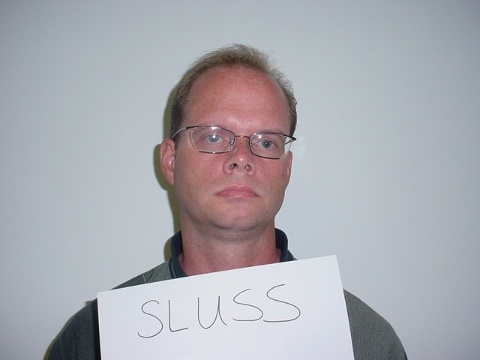
On 21 February 2013, federal agents raided former police polygraphist Doug Williams‘ home and office, seizing his customer records as part of an investigation targeting polygraph countermeasure instructors. The U.S. government used these records to create a interagency watch list of individuals who had purchased Williams’ manual, How to Sting the Polygraph, an accompanying DVD, or had received in-person training on how to pass a polygraph “test.”
Court records obtained by AntiPolygraph.org reveal that one of the individuals on the list, Ray Dwight Sluss of Johnson City, Tennessee, a convicted sex offender on probation, passed four post-conviction polygraph examinations. In a memorandum (PDF) dated 22 November 2013, United States Attorney William C. Killian writes:
In 2013, federal agents received information that Sluss had purchased polygraph counter-measures techniques and training from an individual in Oklahoma City, Oklahoma who marketed these products to convicted felons like Sluss who were subject to polygraph examinations. FBI in Oklahoma referred the defendant to FBI in Johnson City, where an agent confirmed that Sluss had been convicted of child pornography crimes, was on state court probation, and had completed periodic polygraph examinations. As a convicted sex offender, Sluss was also subject to limitations on his residence, employment, and activities. FBI verified that Sluss had successfully passed four polygraph examinations since his release from prison.
There is no indication that any polygraph operator ever detected Sluss using polygraph countermeasures. Sluss had completed his polygraph requirement and on 10 September 2010 was placed on “unsupervised” probation.
According to another court filing, on 28 August 2013, FBI Special Agent Peter O’Hare, Jr. “visited Mr. Sluss at his home to question him about a report that Mr. Sluss had purchased materials relating to polygraph examination countermeasures. Mr. Sluss denied making such a purchase.”
O’Hare returned to Sluss’s residence two days later accompanied by the latter’s probation officer, and a search of the home led to the discovery of computer media with child pornography, for possession of which Sluss was sentenced to 17.5 years in federal prison.
The Sluss case highlights the vulnerability of polygraphy to simple countermeasures (see Chapter 4) that polygraph operators cannot detect and the foolishness of official reliance on this pseudoscientific procedure for public safety purposes.
It is interesting to note that the government, and in particular U.S. Attorney Killian, accuses anyone who educates themselves about how the polygraph works of leaning “polygraph counter-measures techniques” in order to lie on the polygraph “test” and still pass it. Mr. Killian dismisses out of hand the idea that these people are simply learning how to prove their truthfulness by knowing what it takes to pass this so-called “test”. Those who are telling the truth and are trying to avoid the very real possibility (even probability) of being falsely accused of deception simply because they have a nervous reaction to a relevant question are accused of the terrible thought crime of learning how to produce a “truthful” polygraph chart. Mr. Killian simply refuses to admit that anyone has ever been falsely accused of lying by the polygraph operators, let alone admitting that this happens with a great deal of frequency, and he refuses to acknowledge that many people are well aware that these “false positives” are a common occurrence. Go to http://www.polygraph.com and watch the CBS 60 MINUTES program which demonstrated very graphically how often truthful people are called liars when three out of three polygraph operators called three different people liars on a crime that never even happened.
It is ironic in the extreme when you consider that the very same Justice Department that employs Mr. Killian argued that the polygraph was not accurate or reliable enough to be used as evidence in the landmark U.S. Supreme Court case of U.S. v. Scheffer which refused to allow the results of a polygraph into evidence because there was no evidence that it was any more reliable “than the toss of a coin.”
And I think it is laughable that Mr. Killian stated that I “marketed” my manual HOW TO STING THE POLYGRAPH “to convicted felons like Sluss who were subject to polygraph examinations.” I no more “marketed” my manual to people like Sluss than I did to FBI agents and other law enforcement people who were “subject to polygraph examinations.” It is also worth mentioning that this very same manual was presented as part of my testimony in the US Congress in 1985 when I testified in support of the Employee Polygraph Protection Act – it is in the Congressional Record and literally tens of thousands of my manuals were sent out by Congressmen in response to requests by their constituents. You can read my full testimony and the story of my ill fated fight against the scam of “lie detection” in my book FROM COP TO CRUSADER – THE STORY OF MY FIGHT AGAINST THE DANGEROUS MYTH OF LIE DETECTION. It is available on Amazon as is the banned book HOW TO STING THE POLYGRAPH.